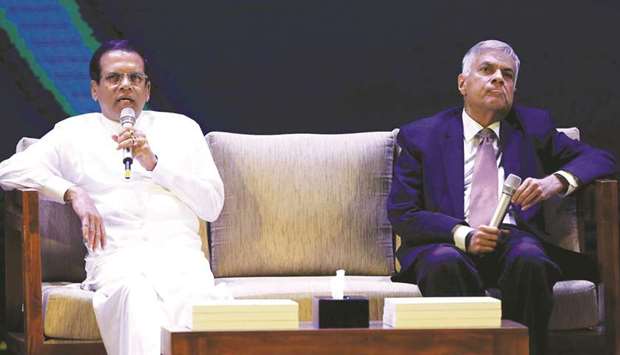It pledged to implement fiscal reforms to achieve medium to long-term targets for macroeconomic stability and an improved investor climate.
Unproductive spending will also be eliminated from the budget and state-owned enterprises restructured to let them operate as commercially viable and accountable enterprises.
But debt is the immediate problem.
Sri Lanka is facing a debt crunch as most of its expensive commercial loans start to come due next year. Foreign debt repayments will grow to a record $4bn in 2019 from this year’s $2.42bn, finance ministry officials have said.
“The bunching of external debt repayments from 2018 requires tight budgetary control,” the government said in the policy statement.
“Due to this lack of fiscal space, economic growth can no longer be driven by government spending. Growth will instead require expansion of tradable activities, driven by private investment to service external debt.”
The external debt rose to 79.3% of the gross domestic product (GDP) last year from a 71.3% in 2014. However the government has planned to cut it to 70% by 2020.
The government has blamed “colossal borrowing” by the previous government for the spike in the debt services.
But former president Mahinda Rajapakse has defended large-scale borrowing, saying it was needed to rebuild infrastructure after a 26-year civil war ended in 2009, investing in things such as ports, railways, highways and power plants, mostly through financed by Chinese loans.
President Maithripala Sirisena, who unseated Rajapakse in an election two years ago, has already converted the debts of a loss-making $1.5bn Chinese-built port into equity to reduce the debt burden.
Moody’s Investors Service in July said Sri Lanka’s credit profile will remain constrained by its large debt burden and very low debt affordability, combined with contingent liability risks from state-owned enterprises.



